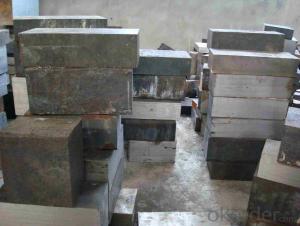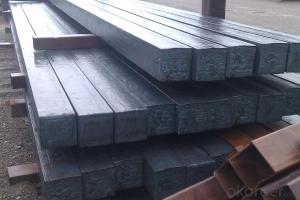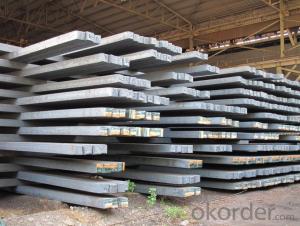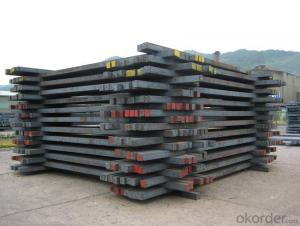Z35 BMP Rolled Steel Coil Construction Roofing Construction
- Loading Port:
- Tianjin
- Payment Terms:
- TT OR LC
- Min Order Qty:
- 100 m.t.
- Supply Capability:
- 10000 m.t./month
OKorder Service Pledge
OKorder Financial Service
You Might Also Like
Structure of Z35 BMP Rolled Steel Coil Construction Roofing Construction

Description of Z35 BMP Rolled Steel Coil Construction Roofing Construction
PPGI is made by cold rolled steel sheet and galvanized steel sheets as baseplate, through the surface pretreatment (degreasing, cleaning, chemical conversion processing), coated by the method of continuous coatings (roller coating method),
and after roasting and cooling. Zinc coating: Z60, Z80, Z100, Z120, Z180, Z275, G30, G60, G90
Alu-zinc coating: AZ60, AZ80, AZ100, AZ120, AZ180, G30, G60, G90
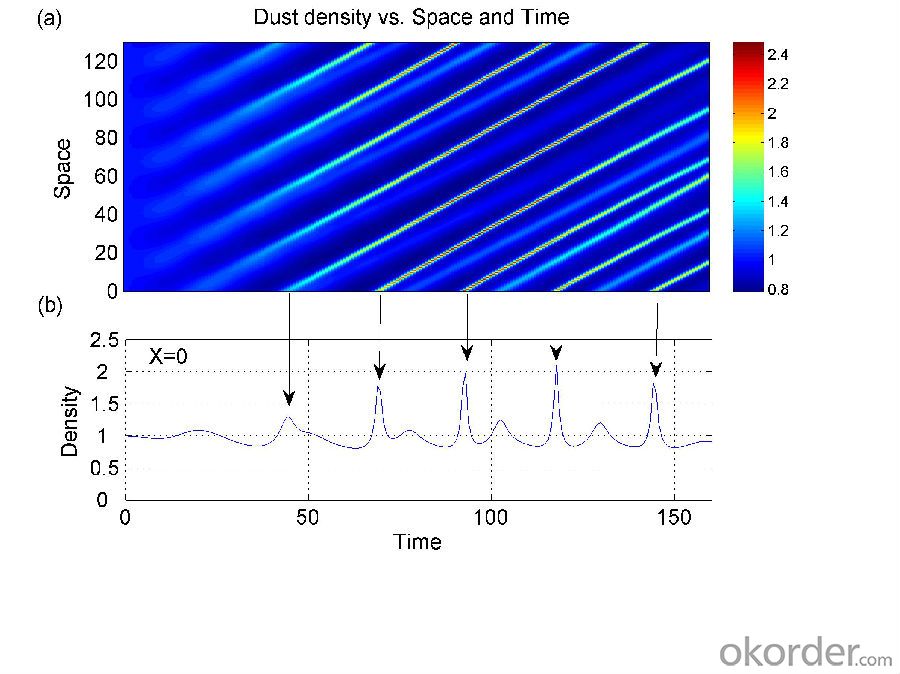
Main Feature of Z35 BMP Rolled Steel Coil Construction Roofing Construction
1) Excellent corrosion resistance: The zinc layer provides a good protection of Pre-painted Galvanizeed Steel Sheet.
2) High heat resistance: The reflective surface of the material aids in efficiently reflecting the sunlight away and in turn reducing the amount of heat transmitted. The thermal reflectivity converts into energy savings.
3) Aesthetics: Pre-Painted Galvanized steel sheet is available in plethora of patterns and multiple sizes as per the requirements that given by our customers.
4) Versatility: can be used in the various areas.Standard seaworthy export packing: 3 layers of packing, inside is kraft paper, water plastic film is in the middle and outside GI steel sheet to be covered by steel strips with lock, with inner coil sleeve.
Applications of Z35 BMP Rolled Steel Coil Construction Roofing Construction
1. Construction and building: roofing; ventilating duct; handrail; partition panel;etc.
2. Electric appliance: refrigerator; washing machine; refrigerator; DVD;etc.
3.Transportation: oil tank; road sign; etc.
4.Agriculture:barn; etc.
5.Others:vending machine; game machine; etc. 
Specifications of Z35 BMP Rolled Steel Coil Construction Roofing Construction
| Classified symbol | Yield Point Minimum N/mm2 | Tensile Strength Minimum | Elongation Minimum % | Application | ||||
| N/mm2 | Nominal Thickness mm (t) | |||||||
| JIS | Yogic | 0.25-0.4 | 0.4-0.6 | 0.6-1.0 | 1.0-1.6 | |||
| G3312 | specification | |||||||
| CGCC | CGCC | -205 | -270 | -20 | -21 | -24 | -24 | Commercial |
| CGCD | CGCD | --- | 270 | --- | 27 | 31 | 32 | Drawing |
| --- | CG340 | 245 | 340 | 20 | 20 | 20 | 20 | Structural |
| CGC400 | CG400 | 295 | 400 | 16 | 17 | 18 | 18 | Structural |
| CGC440 | CG440 | 335 | 440 | 14 | 15 | 16 | 18 | Structural |
| CGC490 | CG490 | 365 | 490 | 12 | 13 | 14 | 16 | Structural |
| CGC570 | CG570 | 560 | 570 | --- | --- | --- | --- | Structural |
| ASTM Designation | Yield Point Minimum | Tensile Strength Minimum | Elongation Minimum % | Application | Q/BQB 445-2004(China standard) | ASM A653/A653M | JISG 3312 | |
| ksi(MPa) | ksi(MPa) | TDC51D+Z | (CS TYPE A+Z) | CGCC | ||||
| A653(M)-99 CS TYPE A,B,C | --- | --- | --- | Commercial | TDC52D+Z | CGCD | ||
| A653(M)-99 FS | --- | --- | --- | Lock Forming | TS250GD+Z | (G250+Z) | - | |
| A653(M)-99 DS | --- | --- | --- | Drawing | TS300GS+Z | (G300+Z) | CGC 400 | |
| A653(M)-99 SS Grade33(230) | 33(230) | 45(310) | 20 | Structural | TS350GD+Z | (G350+Z) | CGC490 | |
| A653(M)-99 SS Grade37(255) | 37(255) | 52(360) | 18 | Structural | TS550GD+Z | (G550+Z) | CGC570 | |
| A653(M)-99 SS Grade40(275) | 40(275) | 55(380) | 16 | Structural | ||||
| A653(M)-99 SS Grade50(345) | 50(345) | 65(450) | 12 | Structural | ||||
| A653(M)-99 SS Grade80(550) | 80(550) | 82(570) | --- | Structural | ||||
FAQ of Z35 BMP Rolled Steel Coil Construction Roofing Construction
We have organized several common questions for our clients,may help you sincerely:
1. How Can I Visit There?
Our company is located in Tianjin City, China, near Beijing. You can fly to Tianjin Airport Directly. All our clients, from home or aboard, are warmly welcome to visit us!
2. How Can I Get Some Sample?
We are honored to offer you sample.
3. Why choose CNBM?
1, ISO, BV, CE, SGS approved.
2, Competitive price and quality.
3, Efficient service team online for 24 hours.
4, Smooth production ability(50000tons/month) .
5, quick delivery and standard exporting package.
6, Flexible payment with T/T, L/C, Paypal, Kunlun bank, etc .
- Q:What is the size range of steel billets?
- The size range of steel billets can vary depending on the specific requirements of the industry or application. However, in general, steel billets are typically produced in square or rectangular shapes, with dimensions ranging from 100mm to 200mm in width and height, and lengths ranging from 3 to 12 meters. These dimensions can be customized based on the intended use of the billets, such as for forging, rolling, or further processing into finished steel products.
- Q:How are steel billets handled during transportation?
- To ensure the safety and integrity of steel billets during transportation, great care is typically taken. Specialized equipment, such as cranes, forklifts, or conveyors, is commonly used to lift and transport the heavy billets. Before being transported, the billets are often bundled or secured together to prevent shifting or falling. This bundling process may involve tightly holding the billets with steel straps or bands, ensuring they remain stable throughout transportation. Protective measures are also frequently implemented to prevent external damage. For example, the billets can be covered with protective coatings, such as oil or rust inhibitors, to shield them from moisture and corrosion. This is especially important when transporting billets over long distances or in unfavorable weather conditions. When it comes to loading the billets onto trucks, trains, or ships, careful attention is paid to balancing the weight distribution to avoid any imbalances or tipping during transit. The transportation vehicles used are designed to handle heavy loads and often have additional mechanisms, like straps, latches, or containers, to further secure the billets. During transit, the vehicles carrying the steel billets are operated with caution to minimize sudden movements or impacts. Drivers may need to follow specific routes or adhere to speed limits to ensure a smooth and safe journey. Regular inspections and maintenance of the transportation vehicles are carried out to ensure their reliability and prevent any mechanical failures that could jeopardize the safety of the billets. In conclusion, the transportation of steel billets requires meticulous planning, secure bundling, protective measures, and safe handling techniques. These practices are implemented to safeguard the billets and ensure they reach their destination in optimal condition, ready for further processing or utilization in various industries.
- Q:How are steel billets packaged for shipment?
- Steel billets are packaged in a manner that guarantees their protection and facilitates convenient handling for shipment. The packaging process involves multiple steps to ensure the safe transportation of the billets. First and foremost, the steel billets undergo inspection to ensure that they meet the required quality standards. Upon approval, they are cleaned and dried to eliminate any dirt or moisture that may cause corrosion during shipment. Following that, the billets are bundled together using steel strapping or wire to secure them in a compact form. This bundling not only prevents the billets from shifting or rolling during transportation but also makes it easier to handle and load them onto trucks or containers. Additionally, to provide further protection, the steel billets are often wrapped in a layer of plastic or paper. This extra layer acts as a barrier against moisture, dust, and other potential contaminants that could harm the billets during transit. Once the billets are bundled and wrapped, they are typically loaded onto pallets or placed in steel crates. This ensures stability during transportation and allows for ease of movement and stacking using forklifts or cranes. Lastly, the packaged steel billets are labeled with relevant information such as the product name, dimensions, weight, and destination. This labeling guarantees accurate identification and aids in the efficient handling and delivery of the billets. In summary, steel billets are packaged for shipment with a focus on protection, ease of handling, and efficient transportation. These packaging measures guarantee that the billets arrive at their destination in optimal condition, ready for further processing or utilization in various industries.
- Q:What are the different shapes and sizes of steel billets?
- Steel billets are found in various shapes and sizes depending on their intended use and manufacturing method. The most frequently seen shapes of steel billets include square, rectangular, and round. Square billets are commonly employed in forging and rolling processes where they are heated and molded into different products like bars, rods, and rails. These billets have equal dimensions on all sides, creating a square shape. On the other hand, rectangular billets have longer sides and shorter ends, resembling a rectangular shape. They are often utilized in the production of structural components such as beams and columns, as well as for creating pipes and tubes. As the name implies, round billets have a cylindrical shape and are frequently used in the manufacturing of seamless pipes, axles, and shafts. Their uniform circular cross-section makes them suitable for processes involving rotary motion or requiring a strong cylindrical shape. In terms of size, steel billets can vary significantly depending on the specific requirements of the final product. Factors such as the desired end product, manufacturing process, and available equipment determine their dimensions. Common sizes range from small billets measuring approximately 100mm to 200mm in diameter or width, to larger billets exceeding 300mm in diameter or width. It is worth noting that steel billets can also be customized to meet the specific size and shape requirements of different industries. This versatility allows for the production of a wide range of steel products, serving diverse applications in the construction, automotive, and other manufacturing sectors.
- Q:What are the different types of surface finishes available for steel billets?
- The different types of surface finishes available for steel billets include hot rolled, cold rolled, pickled and oiled, and galvanized finishes.
- Q:How are steel billets used in the production of marine parts?
- Steel billets serve as a vital element in the manufacturing process of marine parts. These semi-finished steel products act as the raw material for shaping and forming a variety of marine components. To commence, steel billets undergo a procedure known as hot rolling. This involves subjecting them to high temperatures and passing them through rolling mills to attain different shapes and sizes. By undergoing hot rolling, the steel's grain structure is refined, thereby enhancing its mechanical properties and rendering it suitable for marine applications. Once the desired shape and size are achieved, these billets are further processed using various techniques such as forging, machining, and welding to create specific marine parts. Propeller shafts, rudder stocks, hull frames, and bulkheads are examples of marine components produced using steel billets. The exceptional strength and durability of steel make it an excellent choice for manufacturing marine parts, as it can withstand the harsh conditions of saltwater, extreme temperatures, and heavy loads. Moreover, steel billets can be easily customized to meet specific design requirements, ensuring the production of precise and dependable marine parts. Additionally, steel billets play a crucial role in the repair and maintenance of marine vessels. When existing components need replacement, steel billets can be shaped and machined to match the exact specifications of the original parts. This guarantees compatibility and seamless integration, facilitating efficient repairs and ensuring the uninterrupted operation of marine vessels. In conclusion, steel billets are indispensable in the production of marine parts as they provide the necessary raw material for shaping and forming various components. The combination of high strength, durability, and customization capabilities makes steel billets an ideal choice for marine applications, ensuring the reliability and performance of marine vessels.
- Q:What are the different types of surface coating methods used for steel billets?
- There are several types of surface coating methods used for steel billets, including galvanizing, electroplating, powder coating, and painting. Galvanizing involves applying a layer of zinc to the surface of the billets to provide corrosion resistance. Electroplating uses an electrical current to deposit a thin layer of metal onto the steel surface, enhancing its appearance and protecting it from corrosion. Powder coating involves applying a dry powder to the billets, which is then heated to form a protective layer. Painting is another common method, where a liquid paint is applied to the billets to provide both protection and aesthetic appeal.
- Q:How are steel billets used in the production of wind turbine components?
- Steel billets are an essential raw material used in the production of wind turbine components. These billets are large, semi-finished blocks of steel that serve as the starting point for various manufacturing processes. One of the primary applications of steel billets in wind turbine production is for the fabrication of tower sections. The tower is a crucial component that supports the entire turbine structure, and it needs to withstand strong winds and other environmental conditions. Steel billets are first heated and then rolled or forged into the desired shape and size to create the tower sections. These sections are then welded together to form the complete tower structure. Additionally, steel billets are also used for manufacturing other wind turbine components such as the hub, nacelle, and main shaft. The hub is the central part of the turbine that holds the rotor blades, while the nacelle houses the generator and other critical components. Both these parts require high-strength steel, which can be obtained by processing steel billets. Similarly, the main shaft, which connects the rotor hub to the gearbox, needs to be extremely durable and able to withstand the torque generated by the blades. The choice of using steel billets in wind turbine production is driven by the material's exceptional mechanical properties. Steel exhibits high strength, allowing the turbine components to withstand the extreme forces they experience during operation. Moreover, steel also possesses excellent fatigue resistance, which is crucial considering the continuous rotation and cyclic loading of wind turbines. Overall, steel billets play a vital role in the production of wind turbine components, ensuring the structural integrity and reliability of these renewable energy systems. By using steel billets, manufacturers can fabricate strong and durable components that contribute to the efficient and sustainable generation of wind power.
- Q:What is the global production capacity of steel billets?
- The global production capacity of steel billets is difficult to determine precisely as it constantly fluctuates due to various factors such as demand, market conditions, and technological advancements. However, it is estimated to be in the range of several hundred million metric tons annually.
- Q:How are steel billets used in the manufacturing of industrial compressors?
- Steel billets are crucial in the manufacturing of industrial compressors as they serve as the raw material for forging or machining the various components of the compressors such as cylinders, pistons, and crankshafts. These billets are heated and shaped through different manufacturing processes to create the desired compressor parts, ensuring strength, durability, and high performance in the final product.
1. Manufacturer Overview |
|
|---|---|
| Location | |
| Year Established | |
| Annual Output Value | |
| Main Markets | |
| Company Certifications | |
2. Manufacturer Certificates |
|
|---|---|
| a) Certification Name | |
| Range | |
| Reference | |
| Validity Period | |
3. Manufacturer Capability |
|
|---|---|
| a)Trade Capacity | |
| Nearest Port | |
| Export Percentage | |
| No.of Employees in Trade Department | |
| Language Spoken: | |
| b)Factory Information | |
| Factory Size: | |
| No. of Production Lines | |
| Contract Manufacturing | |
| Product Price Range | |
Send your message to us
Z35 BMP Rolled Steel Coil Construction Roofing Construction
- Loading Port:
- Tianjin
- Payment Terms:
- TT OR LC
- Min Order Qty:
- 100 m.t.
- Supply Capability:
- 10000 m.t./month
OKorder Service Pledge
OKorder Financial Service
Similar products
New products
Hot products
Related keywords
